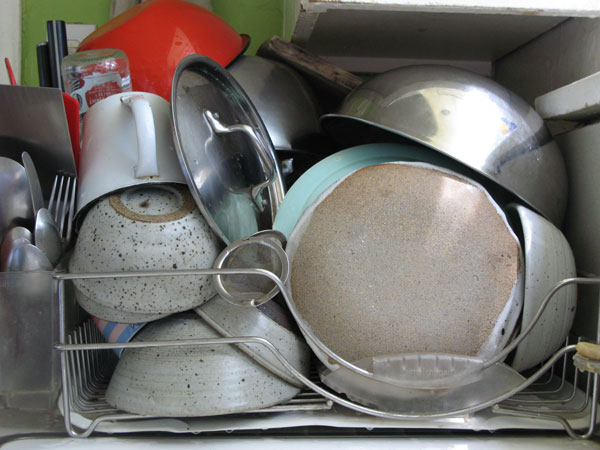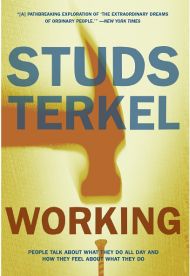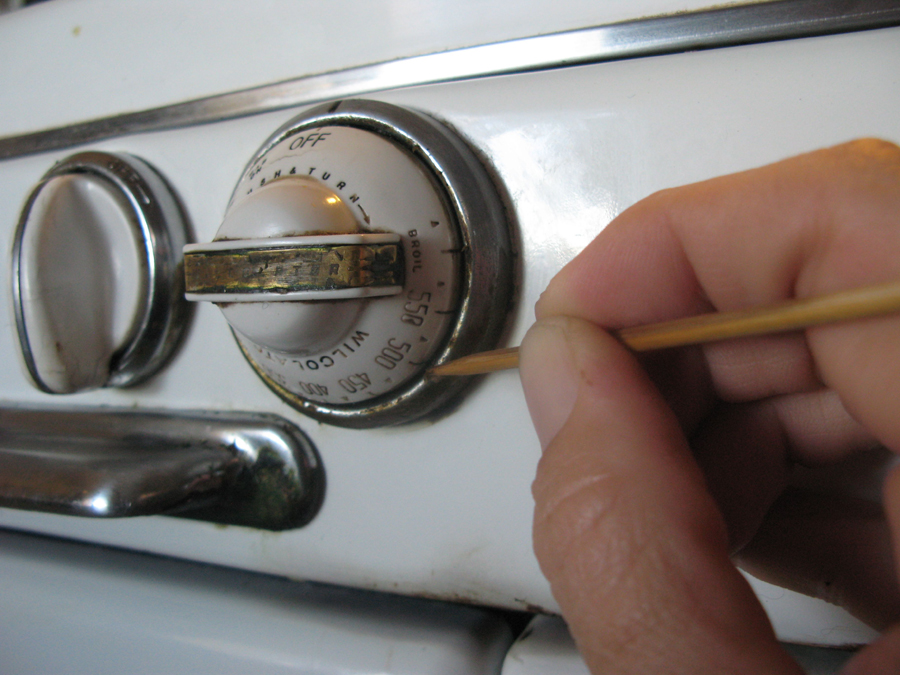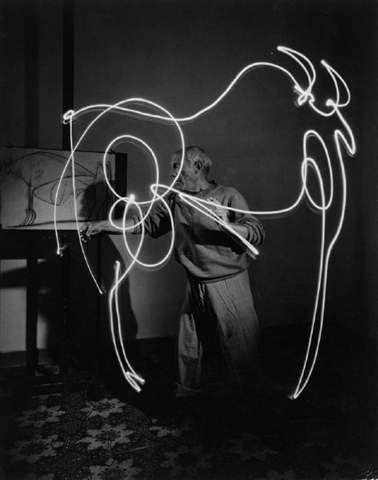Housework is Shadow Work
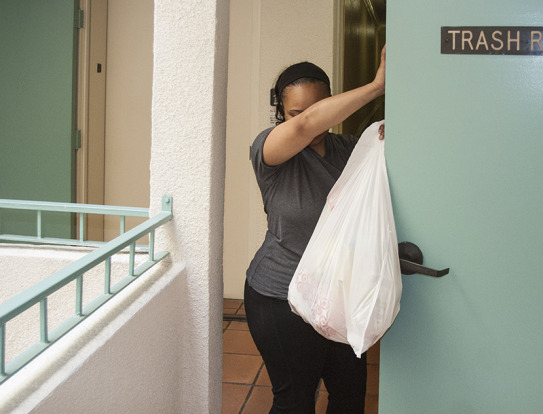
The unpaid work that enables our roles as paid workers and consumers is “shadow work,” according to philosopher and historian Ivan Illich. Shadow work is work that must get done to sustain the life of the individual in our capitalist system, but does not itself provide for subsistence. Shadow work
…comprises most housework women do in their homes and apartments, the activities connected with shopping, most of the homework of students cramming for exams, the toil expended commuting to and from the job. It includes the stress of forced consumption, the tedious and regimented surrender to therapists, compliance with bureaucrats, the preparation for work to which one is compelled, and many of the activities usually labeled “family life.” (Illich, Ivan, Shadow Work, p 100)
In the pre-modern era, when families lived on farms or ran cottage industries, shadow work did not exist. There was less of a distinction between work performed to maintain life and work performed for money. Cooking, cleaning, tending children, harvesting a crop, and shoeing a horse would all have been seen as contributing to a family’s subsistence. Illich points out that our current concept of “work” did not exist a few centuries ago:
Both “work” and “job” are key words today. Neither had its present prominence three hundred years ago. Both are still untranslatable from European languages into many others. Most languages never had one single word to designate all activities that are considered useful. Some languages happen to have a word for activities demanding pay. This word usually connotes graft, bribery, tax or extortion of interest payments. None of these words would comprehend what we call “work.”
For the last three decades, the Ministry for Language Development in Djakarta tried to impose the one term bekerdja in lieu of half a dozen others used to designate productive jobs. Sukarno had considered this monopoly of one term a necessary step for creating a Malay working class. The language planners got some compliance from journalists and union leaders. But the people continue to refer to what they do with different terms for pleasurable, degrading, tiresome, or bureaucratic actions – whether they are paid or not. All over Latin America, people find it easier to perform the paid task assigned to them than to grasp what the boss means by trabajo. For most toiling unemployed in Mexico, desempleado still means the unoccupied loafer on a well-paid job, not the unemployed whom the economist means by the term.
What today stands for work, namely, wage labor, was a badge of misery all through the Middle Ages. It stood in clear opposition to at least three other types of toil: the activities of the household by which most people subsisted, quite marginal to any money economy; the trades of people who made shoes, barbered or cut stones; the various forms of beggary by which people lived on what others shared with them. In principle, medieval society provided a berth for everyone whom it recognized as a member—its structural design excluded unemployment and destitution. When one engaged in wage labor, not occasionally as the member of a household but as a regular means of total support, he clearly signaled to the community that he, like a widow or an orphan, had no berth, no household, and so stood in need of public assistance. (Illich, Ivan, Shadow Work, p 101)
Karl Polanyi, in The Great Transformation: The Political and Economic Origins of Our Time, describes the destruction that has accompanied the move from subsistence economies to market economies:
To separate labor from other activities of life and to subject it to the laws of the market was to annihilate all organic forms of existence and to replace them by a different type of organization, an atomistic and individualistic one.
This effect of the establishment of a labor market is conspicuously apparent in colonial regions today. The natives are to be forced to make a living by selling their labor. To this end their traditional institutions must be destroyed, and prevented from reforming, since, as a rule, the individual in primitive society is not threatened by starvation unless the community as a whole is in a like predicament. Under the “Kraal” land system of the Kaffirs, for instance, “destitution is impossible: whosoever needs assistance receives it unquestioningly.” No Kwakiutl “ever ran the least risk of going hungry.” “There is no starvation in societies living on the subsistence margin.” The principle of freedom from want was equally acknowledged in the Indian village community, and, we might add, under almost every and any type of social organization up to about the beginning of the 16th century Europe, when the modern ideas on the poor put forth by the humanist Vives were argued before the Sorbonne. It is the absence of the threat of individual starvation which makes primitive society, in a sense, more humane than market economy, and at the same time less economic. Ironically, the white man’s initial contribution to the black man’s world mainly consisted in introducing him to the uses of the scourge of hunger. Thus the colonists may decide to cut the breadfruit trees down in order to create an artificial food scarcity or may impose a hut tax on the native to force him to barter away his labor. In either case, the effect is similar to that of Tudor enclosures with their wake of vagrant hordes.
Now, what the white man may still occasionally practice in remote regions today, namely, the smashing up of social structures in order to extract the element of labor from them, was done in the eighteenth century to white populations by white men for similar purposes. (Chapter 14, "Market and Man")
As family members in the modern era began to sell their labor outside of the home, women found their sphere of work in the home devalued. In fact, it became doubtful whether keeping house counted as work at all, as evidenced by the question too often posed to American women in the late 20th century: “Do you work?” This helps explain why so many housewives found themselves depressed over the last century, and why they struggled to gain access to employment outside the home. Illich advocates a selective return to at least partial subsistence as a way to create happier societies that are better stewards of the environment. When work does not exist to produce goods for industrial consumption, but rather to satisfy human needs, shadow work as such will no longer exist, because all useful activities, including housework, will be valued.
Thanks to my friend Ian Chang for introducing me to Ivan Illich’s Shadow Work through this New York Times article.
 Adele Horne Posted on
Adele Horne Posted on  Thursday, February 21, 2013 at 2:09PM
Thursday, February 21, 2013 at 2:09PM 


